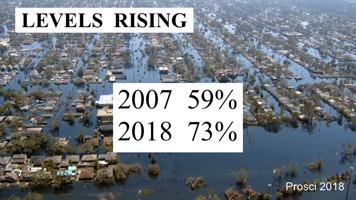Change is constant, unpredictable, relentless- and here to stay. As a result, some industries are perilously close to the breaking point or what’s described as change saturation.
In this discussion on change, there are three terms which must be defined: Disruption, Capacity and Saturation. Change saturation theorizes about how much change is happening in the organization (change disruption) compared to how much change the organization can handle (change capacity). An organization becomes change saturated when the leaders and employees can no longer handle any more changes.
Allow me to explain the concept of change saturation. Imagine three people walking together while carrying buckets of water. Each person’s bucket is a different size, but one bucket is filled to capacity. The person whose bucket is filled too full will experience the stress of trying to carry too much water in their container. In the context of change, this is called change saturation. Saturation doesn’t have to do with the size of the container, but by how much is in the bucket. When the amount of water is too close to the top, it spills over.
The alarming truth about change saturation in business today is that levels continue to rise. Prosci began measuring saturation levels in North America in 2007. The average level was 59%. Now eleven years later, saturation levels have risen to 73%. The only good news: levels were actually higher in 2016 – 78%. The slight decline is a direct result of leaders awareness of the trend and their attempts to address the problem.

Not only that, some industries are much more affected than others. Current research shows that Finance, Telecommunications and Healthcare were the top three most saturated: 78%, 76% and 76% respectively. — Prosci Benchmarking Report 2018).
As you can imagine, change saturation is closely related employee engagement, retention and productivity. When employees and teams become change saturated the most common reactions are disengagement, frustration, fatigue, resistance and confusion. Equally concerning is the cumulative effect this has on employees who become cynical and skeptical of current and future changes.
Unfortunately, when survey participants were asked to identify how their organizations addressed change saturation, the top response was “nothing.” Many organizations did not address the issue. (Prosci 2016)
In a world of exponential change, we can be assured that change will continue. The leaders who are taking change saturation seriously, providing support and engaging employees will see saturation levels drop and success levels rise.
Ready to address change saturation in your organization? Talk to The Change Specialist!





